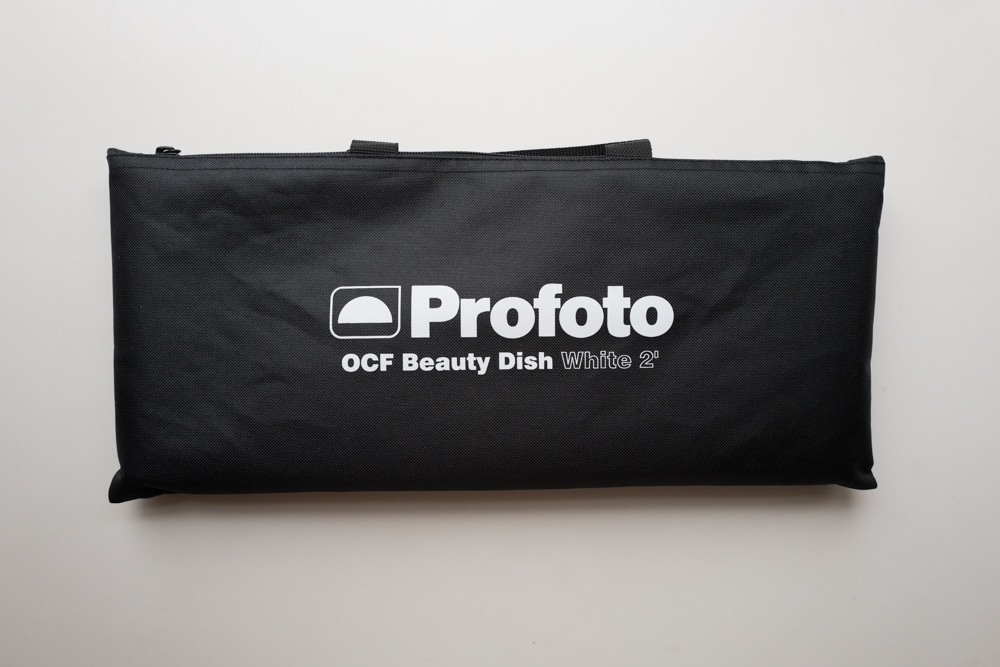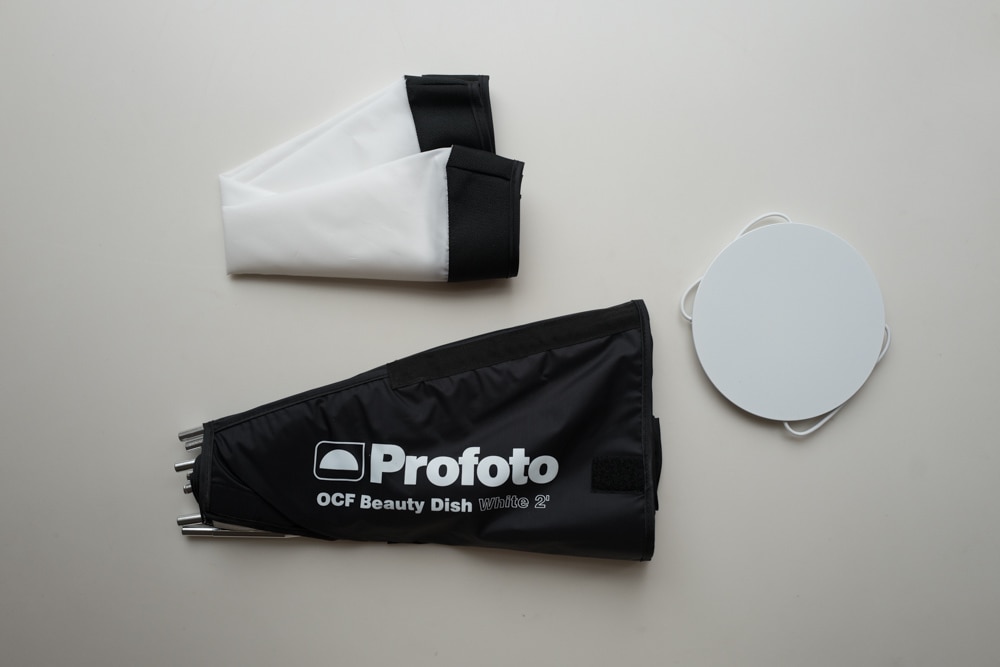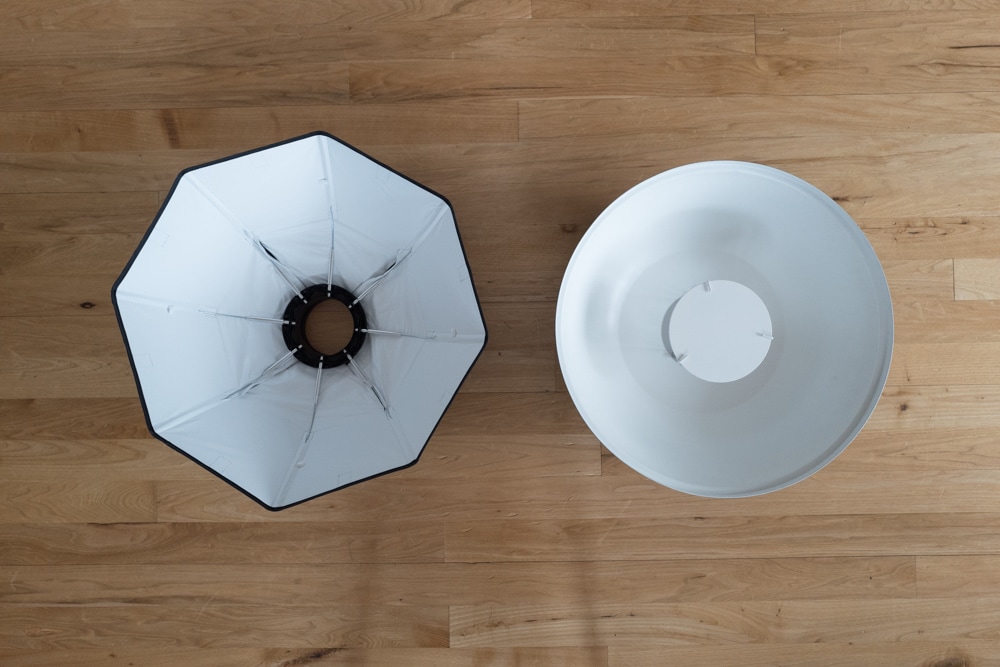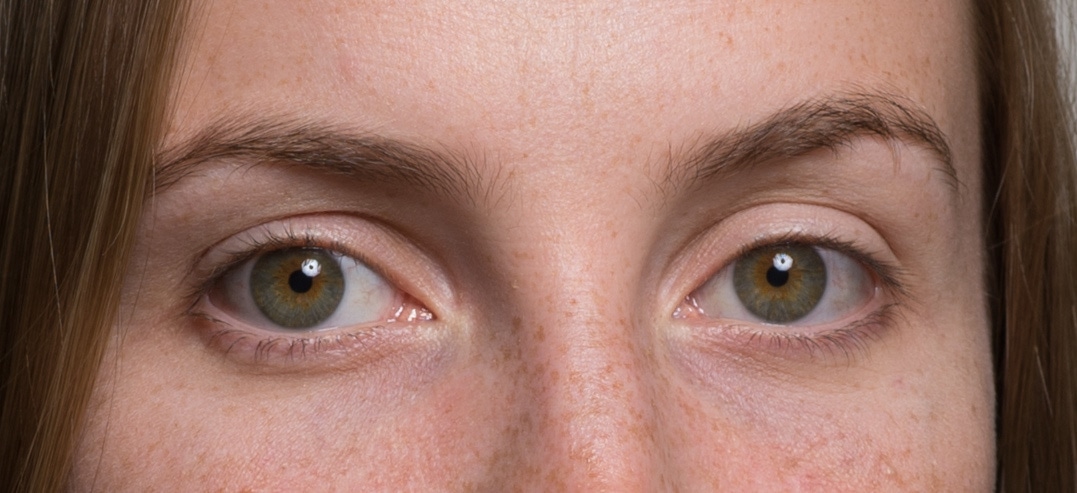Share
Comparing Profoto’s Collapsable and Rigid Beauty Dishes
The Beauty Dish is revered by many photographers for having a soft, but contrasty quality of light. The classic design puts the flash tube behind a...

The Beauty Dish is revered by many photographers for having a soft, but contrasty quality of light. The classic design puts the flash tube behind an opaque or translucent tube cover, which helps eliminate a central hot spot. Like umbrellas, beauty dishes are available with white or silver interiors and can be fitted with a “sock” or grid to control quality and spread of light even more.
But the one universal truth about beauty dishes is that they are a pain to transport. The Profoto Softlight “Beauty Dish” reflector, for example, is 20.5” in diameter, while the Mola Mantti comes in at a whopping 43.5”. The thinness of the metal shell demands protection while traveling, thus many photographers rely on cases like the Tenba CC-PSF Car case, which is nearly 4 square feet.
Sensing demands for something more portable, manufacturers (Impact, Phottix) have started producing folding beauty dishes. But how do they stack up to their rigid counterparts. We compare Profoto’s OCF Beauty Dish with the Softlight reflector.
Setup
The OCF Beauty Dish is an accessory for Profoto’s Off-Camera Flash system including the B1 and B2 battery powered units. It requires the OCF Speedring ($99), and can’t be used on any other units. If you’ve ever struggled to insert tensioned rods into a speedring before, then you’ll appreciate the design of the OCF Speedring, which allows you snap the rods into place.




The deflector plate attaches with four elasticized ropes to a small loops in the inner part of the dish. The connector clip is made from plastic, which makes me think that it could break over time. Nothing about the construction of the deflector plate leads me to believe that a component could be replaced in a case of breakage.


The whole dish can be assembled and disassembled in less than a minute with practice. The trade-off in transport size is a no-brainer.
Unlike most softbox designs, the optional diffuser attaches with velcro pieces on the outside of the dish. This makes is more similar to attaching a sock to a beauty dish, but because the rim isn’t rigid, it’s infinitely easier to attach. Profoto doesn’t offer a cloth grid attachment for the modifier.
Quality of Light
For the test, I set up a Profoto Acute 2R 1200 slightly to camera right and approximately 3 feet from the model. Here’s the set up shot.

Now a comparison of the collapsable and rigid beauty dish.

Profoto 20.5″ White Softlight “Beauty Dish”. 85mm 1/160th at f/8.0 on Nikon D4

Profoto OCF 2′ Beauty Dish with Deflector Plate, white. 85mm 1/160th at f/8.0 on Nikon D4.
And a 1:1


The OCF has an octagonal shape which is evident when you’re pixel peeping, but at normal viewing scale would be indiscernible from the circular Softlight. The OCF seems slightly more contrasty, but for practical purposes, the quality of light is the same.
Conclusion
If you frequently shoot on location and don’t have the luxury of having multiple assistants to haul your gear, then the OCF Beauty Dish should be in your arsenal. Of course, this means that you’re already using or considering purchasing a B1 or B2. Fortunately, you have other options that will work with generic speed rings. However, I can’t vouch for the ease-of-setup compared to the OCF version. And as a previous owner of Dynalite and Elinchrom systems, I can say without reservation that the Profoto Speedring is the best I’ve encountered.
Whether the OCF Beauty Dish and speedring would stand-up to repeated use is the main question. As someone who has broken multiple softboxes and speedrings trying to disassemble the tension rods, durability is always a concern. But the quality of light from the OCF is essentially equivalent to its rigid counterpart, and I wouldn’t mind having this lighting modifier in my arsenal.
***
Learn more about lighting with our free guide “The Photographer’s Lighting Handbook.”



